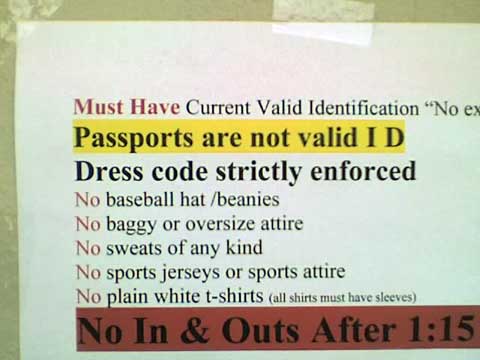As regular readers will know, I am not a big fan of AT&T these days. (Update on that situation: the daily calls from Cingular have stopped this week, but I expect them to start up again soon.)
So, when I was unable to make calls or send text messages after the earthquake, I was more steamed than ever with the company. I predicted it would be a big news story, and thus it begins:
Critics say cell phone system isn’t ready for next big earthquake
PHONES OVERWHELMED: Critics say cell carriers should be able to handle high volume of callsBy Mike Antonucci
Mercury NewsMany cell phone calls failed to get through, while some land lines were briefly spotty. And in the wake of Tuesday’s quake, many people were left trying to determine how they should communicate when the next one hits.
Cell phone providers acknowledged brief disruptions in service, but say their systems aren’t designed to accommodate the dramatic increases in call volume that occurred in the minutes after Tuesday’s 8:04 p.m. Alum Rock quake.
In a bigger disaster, cell phone companies say, people shouldn’t count on being able to use their cell phones immediately.
Yet regulatory advocates question if enough attention is being paid to whether the companies are putting enough resources into the network capacity needed when a disaster strikes.
… Verizon Wireless said customers placed 2.3 million calls in Santa Clara County from 8 to 9 p.m. Tuesday, up from a typical average of 300,000 during that hour. There were no power or network failures, but the torrent of activity meant numerous calls failed as “ineffective attempts” because of the congestion.
Sprint Nextel declined to give specific numbers but said its wireless call volume increased tenfold in the San Jose area from 8 to 9 p.m., with the number of blocked calls rising about sevenfold.
… “There may be a better answer, which is to use text messaging,” said Dennis McSweeney, area vice president for Sprint Nextel.
McSweeney and other phone officials said text messages, which can be sent to groups of recipients, take up a much smaller amount of a network’s resources, freeing up transmission capacity for urgent calls. [Mercury News]
I beg to differ. What really shocked me was that I was totally unable to get text messages out for a couple of hours. That was surprising because I had always assumed that the low-bandwidth requirements of SMS meant that they were better able to handle the load.
While I was watching coverage of the earthquake on TV the other night, they had a story about the poor communications performance. Then they went to a commercial. For Sprint. Touting Sprint’s network capabilities.

Actually, the land line services can’t handle all the volume of calls in emergency situations either. Heck, I still get “all circuits busy” when calling back east once or twice a month, and always on Mother’s Day morning when calling my mom in Florida. If they had to build a system that could handle 100% of all calls during an emergency, it would sit 99% unused for 99.9% of the time and would be massively expensive to build and maintain.